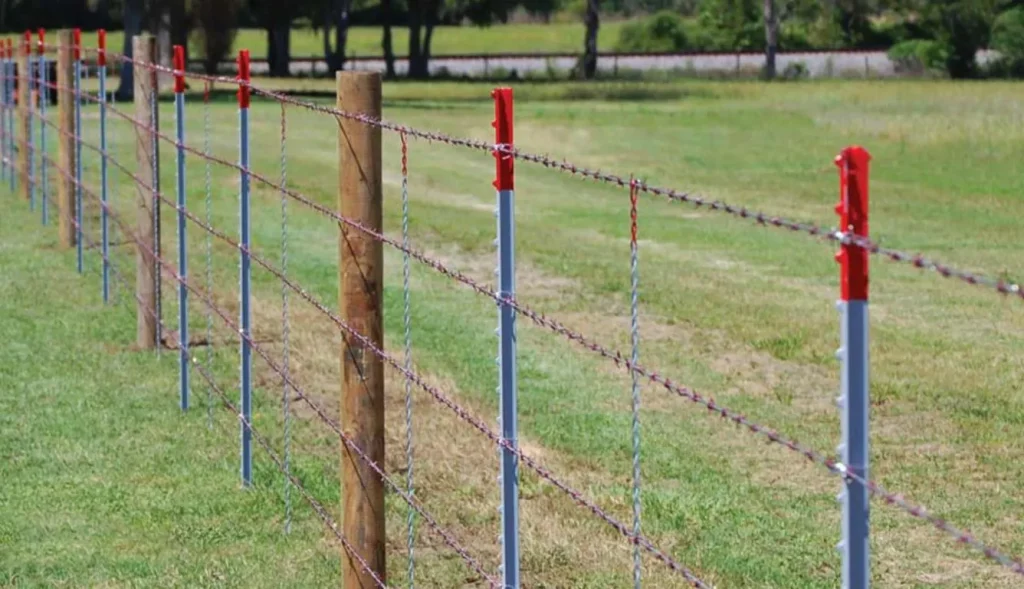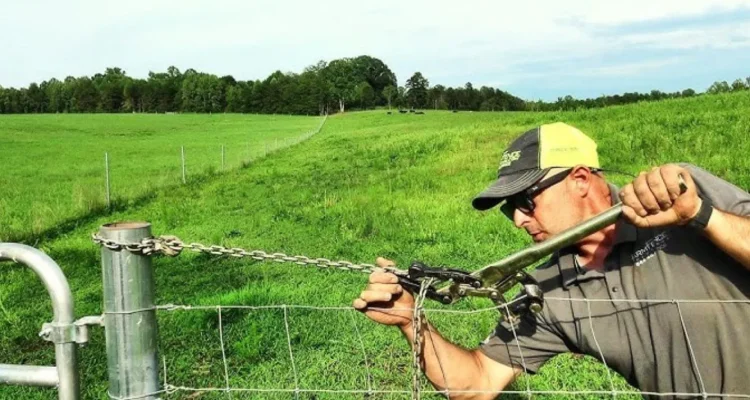Introduction
Importance of Properly Stretched Barbed Wire
Stretching barbed wire correctly is crucial for creating a strong and secure fence. Properly stretched wire helps maintain the integrity of the fence, ensuring it remains effective at containing animals or deterring trespassers. A well-maintained barbed wire fence can last for years with minimal issues.

Tools and Materials Needed
Before you start, gather the following tools and materials:
- Barbed wire
- Wire stretchers or tensioners
- Fence posts
- Wire cutters
- Pliers
- Hammer or post driver
Preparation
Assessing the Fence Line
Begin by inspecting the area where you plan to stretch the barbed wire. Check for any obstacles or irregularities that could affect the installation. Make sure the fence line is clear and measure the distance between fence posts to ensure proper spacing.
Safety Precautions
Handling barbed wire can be hazardous. Always wear gloves and protective clothing to avoid injury from the sharp barbs. Ensure that the area is free from hazards and that you have a clear plan for stretching and securing the wire.
Choosing the Right Barbed Wire
Types of Barbed Wire
Barbed wire comes in different types, including single-strand, double-strand, and high-tensile. Each type serves a different purpose, so choose based on your specific needs. High-tensile wire, for instance, is stronger and more durable but may require specialized tools.
Selecting the Right Gauge
The gauge of the wire affects its strength and durability. Common gauges range from 12 to 14, with lower numbers indicating thicker wire. For general fencing, a gauge of 12 to 14 is usually sufficient.
Setting Up Your Tools
Wire Stretchers
A wire stretcher is essential for achieving the right tension in your barbed wire. There are various types, including manual and hydraulic stretchers. Choose one that fits your needs and budget.
Tensioning Tools
In addition to wire stretchers, you may need tensioning tools to apply the correct amount of pressure to the wire. Ensure these tools are in good condition and suitable for the type of barbed wire you’re using.
Installing Fence Posts
Types of Fence Posts
Choose sturdy fence posts made from wood, metal, or concrete. The type of post will depend on the overall strength required and the environment in which the fence will be installed.
Proper Post Spacing
Post spacing affects the overall stability of the fence. Typically, posts should be spaced 10 to 12 feet apart. Adjust spacing based on the type of barbed wire and the terrain.
Attaching Barbed Wire to Fence Posts
Securing the Wire
Begin by securing the barbed wire to the end posts. Use wire clips or staples to fasten the wire securely, ensuring it is evenly spaced and properly aligned.
Spacing Between Wire Strands
If installing multiple strands, maintain consistent spacing between each strand. This helps in maintaining the fence’s integrity and effectiveness.
Stretching the Barbed Wire
Using a Wire Stretcher
Attach one end of the wire to the end post, then use the wire stretcher to apply tension as you move along the fence line. Ensure the wire remains straight and avoid kinks or twists.
Applying Tension Correctly
Apply gradual tension to avoid over-stretching, which can cause the wire to break or become too loose over time. Regularly check the tension as you work.
Securing the Barbed Wire
Fixing the Wire to Posts
Once the wire is stretched, secure it to the posts using clips or staples. Make sure the wire is firmly attached and adjust the tension if needed.
Techniques for Tightening the Wire
Use a combination of tools and techniques to achieve the right tension. Avoid using excessive force, as this can damage the wire or the posts.
Checking for Proper Tension
Tools for Measuring Tension
Use a tension gauge or similar tool to measure the tension of the barbed wire. This ensures it is neither too tight nor too loose.
Adjusting as Necessary
If the tension is not optimal, make adjustments by loosening or tightening the wire. Ensure that all sections of the fence are consistent in tension.
Maintaining the Fence
Regular Inspections
Inspect the barbed wire fence regularly to check for any signs of wear, damage, or loosening. Early detection of issues helps in maintaining the fence’s effectiveness.
Repairing and Re-Stretching Wire
If you find any damaged sections, repair or replace the wire as needed. Re-stretching may be required to maintain the fence’s integrity over time.
Common Mistakes to Avoid
Over-Stretching vs. Under-Stretching
Avoid stretching the wire too tight, as this can cause damage. Similarly, under-stretching may lead to sagging and reduced effectiveness.
Incorrect Post Placement
Ensure posts are placed at the correct intervals. Incorrect spacing can affect the stability and strength of the fence.
Benefits of Properly Stretched Barbed Wire
Enhanced Security
A well-stretched barbed wire fence provides better security, deterring intruders and preventing animals from escaping.
Longevity of the Fence
Proper stretching and maintenance extend the lifespan of your barbed wire fence, reducing the need for frequent repairs.
FAQs
How tight should barbed wire be stretched?
Barbed wire should be stretched tightly but not excessively. Proper tension is crucial for a secure fence without damaging the wire.
Can I stretch barbed wire alone?
While it’s possible to stretch barbed wire alone, it’s often easier with a helper to ensure the wire remains straight and properly tensioned.
What should I do if the barbed wire breaks?
If the barbed wire breaks, replace the damaged section and re-stretch the new wire. Ensure all connections are secure and properly tensioned.
How often should I inspect my barbed wire fence?
Inspect your barbed wire fence at least once every few months and after severe weather events to ensure it remains in good condition.
What’s the best way to repair a damaged section of barbed wire?
To repair a damaged section, replace the broken wire and re-stretch it to match the tension of the rest of the fence. Ensure all connections are secure.

Conclusion
Summary of Key Points
Stretching barbed wire correctly is essential for building a durable and effective fence. By following the steps outlined above, you can ensure that your fence is secure and long-lasting.
Final Tips
Always prioritize safety and take your time to achieve the right tension. Regular maintenance will help keep your fence in top condition.


Congratulation!